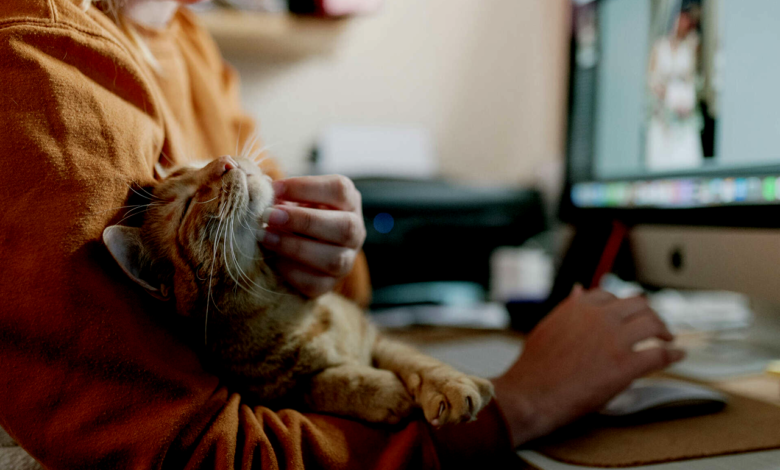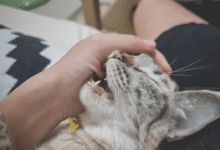
Balancing Work and Pet Ownership Tips for Busy Owners
Balancing work and pet ownership Discover practical tips for busy professionals to care for pets while managing a demanding career Keep pets happy & healthy.
For many professionals, balancing work and pet ownership can feel like an impossible juggling act. Between meetings, deadlines, and personal commitments, finding time to properly care for a furry companion often leads to stress and guilt. However, with the right strategies, even the busiest pet owners can create a harmonious routine that keeps both their career and their pet thriving. The key lies in smart planning, effective time management, and utilizing available resources to ensure pets receive the love and care they need.
Pets bring immeasurable joy to our lives, but they also rely on us for their physical and emotional well-being. Whether you have a high-energy dog, an independent cat, or a small pet with specific needs, understanding how to integrate their care into a demanding work schedule is essential. This guide explores practical solutions from establishing routines to leveraging pet care services that help busy owners maintain a happy, healthy life for their pets while excelling in their professional roles. By implementing these tips, you can reduce stress, strengthen your bond with your pet, and achieve a sustainable work-life balance.
Balancing Work and Pet Ownership Tips for Busy Owners
Species-Specific Requirements
Dogs Highly social animals that need daily exercise (walks, playtime) and mental stimulation (training, puzzle toys). Without proper activity, they may develop anxiety or destructive behaviors. Cats More independent but still require interactive play (feather wands, laser pointers) and vertical spaces (cat trees) to satisfy their hunting instincts. Small Pets (Rabbits, Birds, Rodents) Need species-appropriate environments (large enclosures, chew toys for rabbits) and social interaction (some birds bond strongly with owners, while guinea pigs thrive in pairs).
Breed and Age Factors
High-energy breeds (Border Collies, Siberian Huskies) demand more exercise than low-energy ones (Bulldogs, Basset Hounds). Puppies/kittens require frequent meals, training, and socialization, while senior pets may need modified diets, joint care, and quieter routines. Research your pet’s breed tendencies (e.g., some cats are lap-loving, others are aloof) to tailor care effectively.
Personality and Behavioral Cues
Observe your pet’s preferences: Does your dog love fetch or prefer sniffing walks? Does your cat enjoy cuddles or solo play? Watch for stress signs (excessive barking, hiding, over-grooming) that signal unmet needs adjust routines accordingly. Adapt over Balancing Work: A pet’s needs can change due to health, environment, or aging, so stay attentive and flexible.
Establishing a Consistent Routine
Pets thrive on predictability. A structured daily routine helps them feel secure and reduces anxiety. If you work long hours, try to align feeding, walks, and playtime with your schedule. For instance, take your dog for a walk early in the morning before work and dedicate time in the evening for interactive play. Automated feeders and timed litter boxes can also help maintain consistency when you’re Balancing Work.
Utilizing Pet Care Services
For busy professionals, pet care Balancing Work can be a lifesaver. Dog walkers, pet sitters, and daycare facilities provide companionship and exercise for pets while owners are at work. If hiring help isn’t an option, consider asking a trusted neighbor or friend to check in on your pet. Some companies even offer pet-friendly workplaces, allowing employees to bring their pets to the office.
Keeping Pets Entertained While You’re Away
Stimulating Enrichment Activities
Interactive Toys Puzzle feeders and treat-dispensing toys challenge pets mentally while rewarding them for engagement. For cats, try food puzzles or feather wands to mimic hunting instincts. Environmental Enrichment Create an engaging space cat tree, bird perches, or digging boxes for rabbits. Open window views (with secure screens) provide entertainment for curious pets. Sensory Stimulation Leave on calming music or nature documentaries to soothe pets when Balancing Work. Studies show soft classical music, or audiobooks can ease separation anxiety.
Routine Refresh & Remote Monitoring
Toy Rotation Swap out toys weekly to maintain novelty. A “new” toy (even an old one reintroduced) can reignite interest and prevent Balancing Work. Tech Solutions Pet cameras with two-way audio let you check in, dispense treats, or reassure anxious pets with your voice. Some even track activity levels to alert you to unusual behavior. Training for Independence Teach pets to enjoy solo time by gradually increasing alone periods paired with high-value treats or toys they only get when you’re away.
Maximizing Quality Time Together
Since work takes up much of the day, make the most of the time you spend with your pet. Engage in bonding activities like training sessions, grooming, or cuddling. Even short, focused interactions can strengthen your Balancing Work. On weekends, plan outings such as hikes, park visits, or pet-friendly cafes to create lasting memories.
Health and Wellness Considerations
Regular vet check-ups, a balanced diet, and proper grooming are essential for your pet’s well-being. If your schedule is packed, consider mobile vet services or subscription-based pet food deliveries to save time. Additionally, pet insurance can help Balancing Work unexpected medical costs without disrupting your budget.
Managing Guilt and Stress
Reframing Your Perspective on Care
Focus on quality over Balancing Work A structured routine with dedicated bonding time (like morning walks or evening cuddle sessions) often means more to pets than constant but distracted attention. Remember that pets sleep 12-16 hours daily your work hours often align with their natural rest periods when properly exercised and stimulated.
Choosing the Right Pet for Your Lifestyle
Opt for independent cat breeds (Russian Blue, British Shorthair) or senior pets who require less constant engagement than high-energy puppies. Consider low-maintenance pets like adult cats, fish, or reptiles if your schedule involves frequent travel or long Balancing Work. Many rescue organizations can help match you with pets whose temperament fits your availability.
Read More: Understanding Common Household Toxins and Their Effects on Pets
Conclusion
Successfully balancing work and pet ownership ultimately comes down to creativity, commitment, and finding the right support systems. While busy schedules may sometimes make pet care feel overwhelming, implementing strategies like structured routines, pet-friendly technology, and professional services can dramatically improve your ability to meet your pet’s needs. Remember that quality often trumps quantity thoughtful, engaged time with your pet after work or on weekends can be just as meaningful as constant attention. By viewing pet ownership as a rewarding responsibility rather than another item on your to-do list, you’ll find the experience more fulfilling for both you and your animal Balancing Work.
At the end of the day, pets are remarkably adaptable creatures who thrive on love and stability more than perfection. Don’t be too hard on yourself if some days feel unbalanced; what matters most is your consistent effort to provide care and affection. Whether it’s scheduling midday check-ins with a pet sitter or turning your work breaks into quick play Balancing Work, small adjustments can make a big difference. With patience and the right approach, you can absolutely build a lifestyle where both your career and your pet flourish proving that with some thoughtful planning, even the busiest professionals can be wonderful pet owners.
FAQs
How can I keep my pet happy if I work long hours?
Provide interactive toys, hire a pet Balancing Work, or use daycare services to keep them engaged and socially active.
What are the best low-maintenance pets for busy professionals?
Cats, fish, or older pets often require less attention than high-energy dogs or exotic animals.
How do I prevent separation anxiety in my pet?
Establish a routine, leave comforting Balancing Work (like your scent), and use calming aids or background noise.
Are there tech gadgets that help with pet care?
Yes! Automatic feeders, pet cameras, and GPS trackers can help monitor and care for pets remotely.
Can I train my pet to adapt to my work schedule?
Yes, gradual training with positive reinforcement can help pets adjust to alone time and new routines.







